


Pain is one of the most common reasons people come to Avenue Physio, a trusted physiotherapy clinic in downtown Calgary, but not all pain is the same. Muscle pain and nerve pain feel different, behave differently, and respond to different types of treatment. Knowing which one you’re dealing with is the first step to getting the right care and lasting relief.
“I have pain going down my leg. Do I have sciatica?”
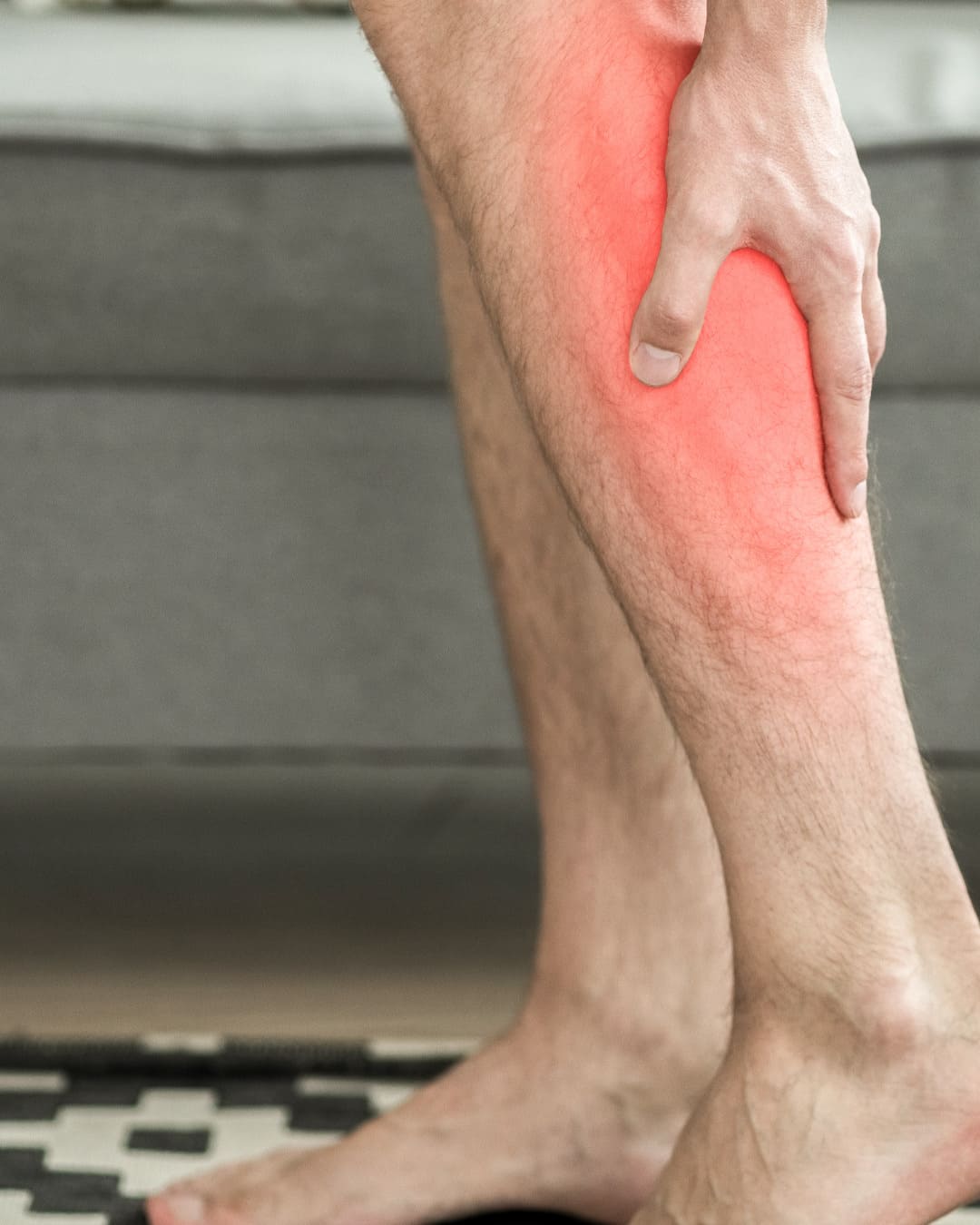
It’s a question we hear all the time. Radiating pain can be alarming and confusing, and it’s our job to help you understand what’s really going on.
Because both nerves and muscles can cause pain that radiates down the limbs, it’s important to understand the difference, as the symptoms can easily be confused.
The images below show how both the infraspinatus (rotator cuff muscle) and the C8 nerve refer to the exact same areas. So how do we figure out where this pain is coming from?
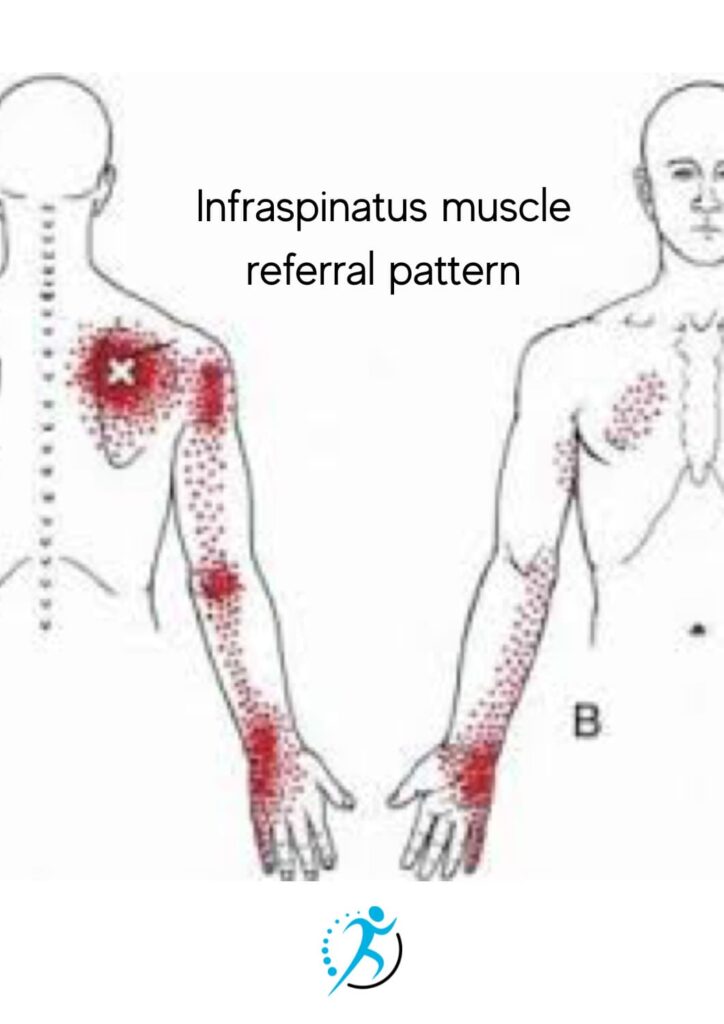
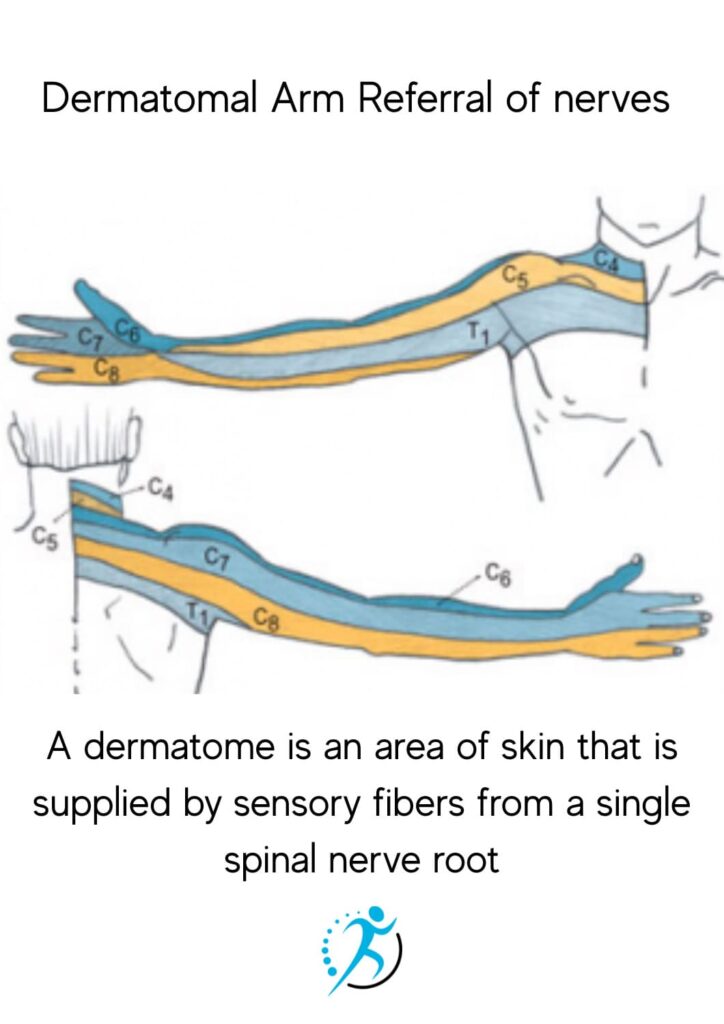
If we just focus on where the pain is we won’t be able to differentiate where it is coming from. We must know how it feels, what makes it worse, what makes it better.
Muscle Pain – Dull, aching, or sore – Feels tight, stiff, or heavy – Usually stays local but can spread into an arm or leg – Tender to touch or stretch – Worsens with movement, overuse, or poor posture
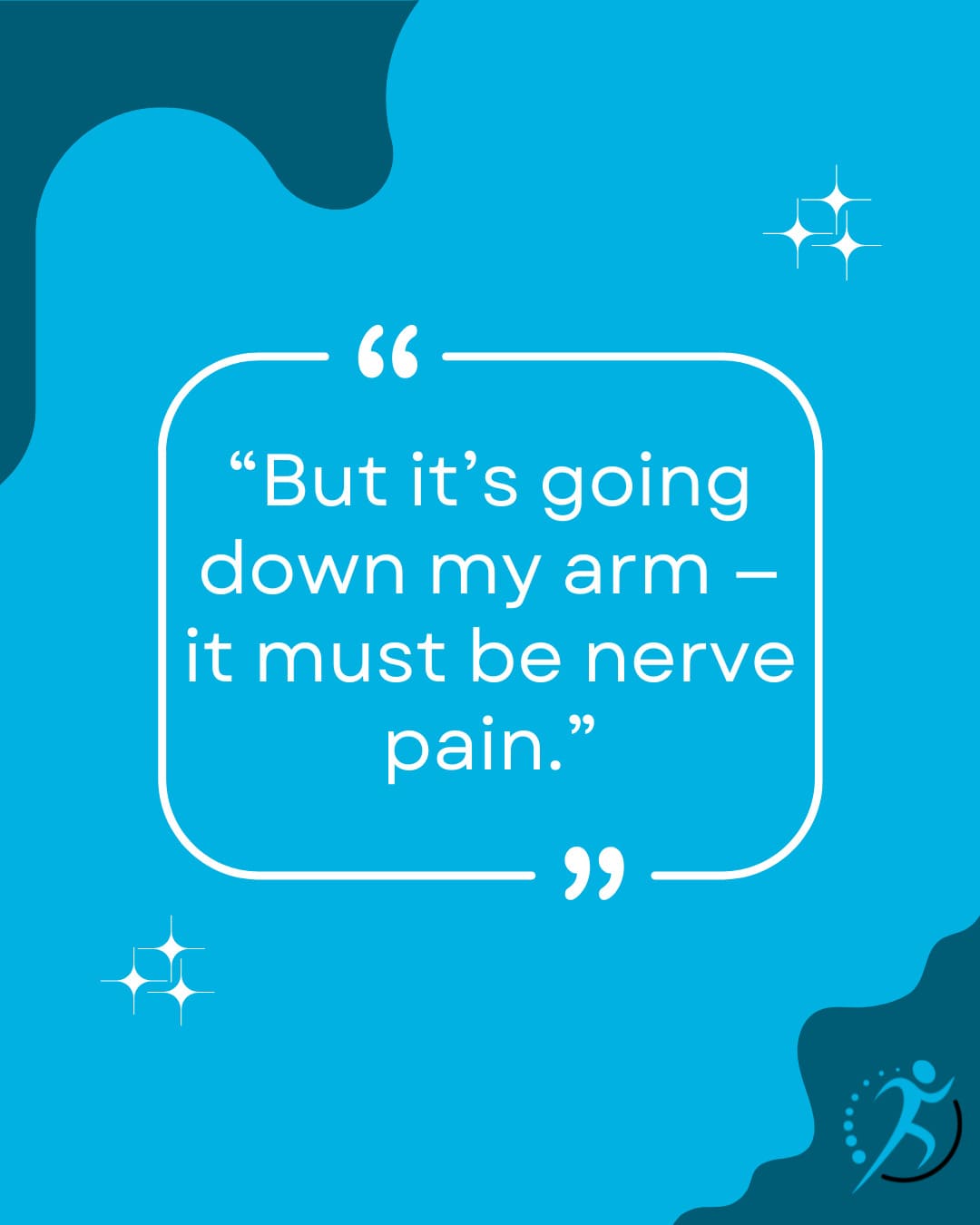
Not necessarily. Muscle pain often refers to other areas of the body. For example: – The infraspinatus muscle (part of your rotator cuff) can develop trigger points – These trigger points can refer pain all the way down the arm – There may be no nerve compression at all
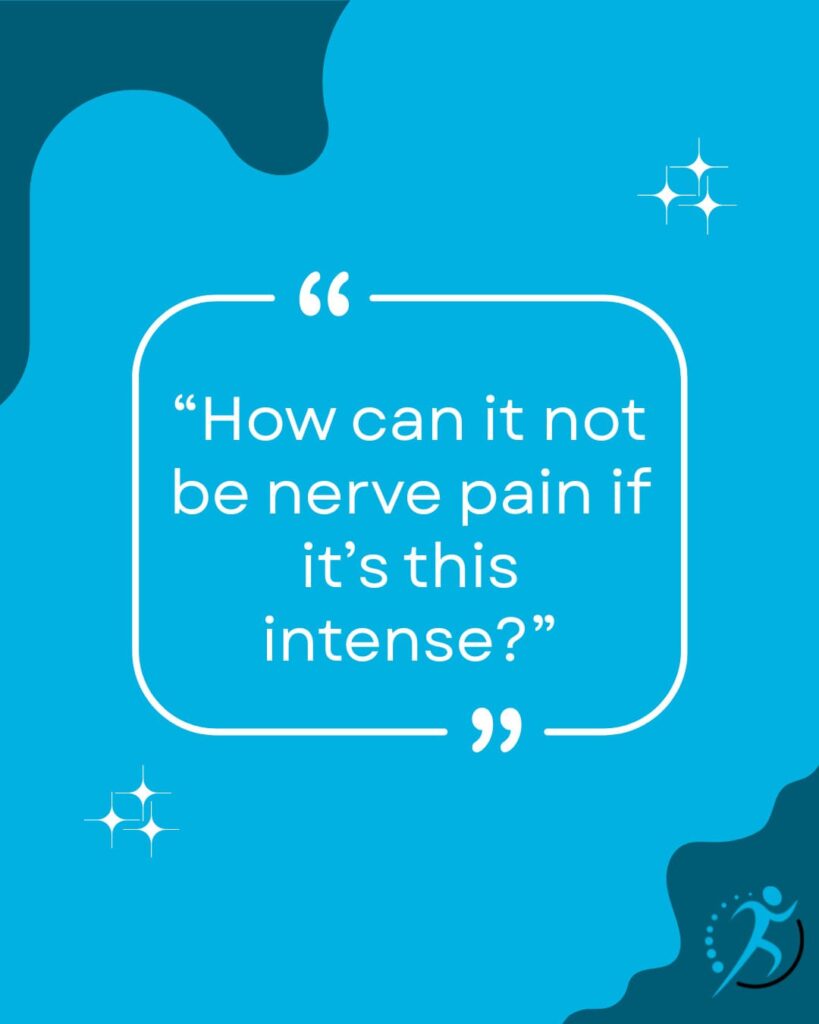
We get this a lot. Muscle pain, especially myofascial (trigger point) pain, can be just as intense, sometimes even more persistent, than nerve pain.
Why It Feels Worse at Night: – Muscles stiffen when you’re inactive – Your sleeping position might compress the trigger point – With fewer distractions, pain feels louder – Referred pain can feel deeper or more serious than it is
Nerve Pain –
Why Nerve Pain Feels Numb or Tingly:
Nerves carry signals between your body and brain. When a nerve gets compressed, irritated, or inflamed, that signal can become disrupted:
Why Nerve Pain Feels So Intense:
Common Causes of Muscle Pain:
Common Causes of Nerve Pain:
At Avenue Physio, we start with a detailed conversation and one-on-one assessment.
Your story gives us essential clues:
Then we perform a thorough physical exam:
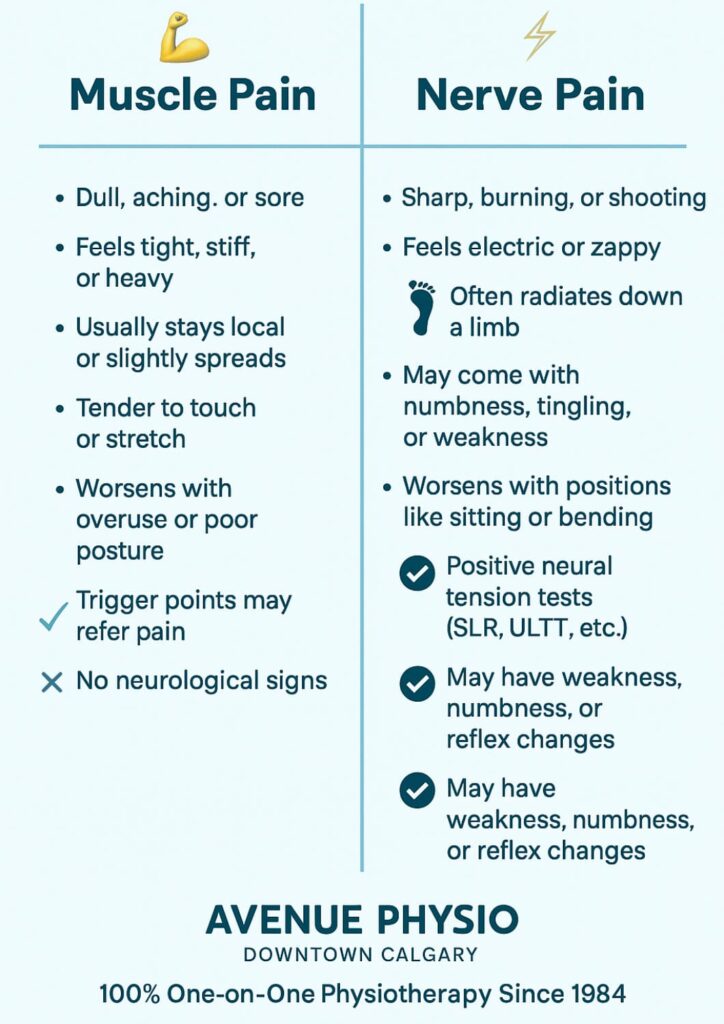
At Avenue Physio, our treatments are 100% one-on-one and based on what your assessment reveals. Whether it’s muscle or nerve pain, your care plan is tailored to your specific needs.
Component | Muscle Pain Treatment | Nerve Pain Treatment |
Manual Therapy | Soft tissue release, massage, trigger point therapy | Nerve mobilizations (flossing/gliding), gentle decompression |
Needling Techniques | Dry needling/IMS for trigger points | Used cautiously; may not be appropriate if nerve is inflamed |
Exercise Focus | Strengthening weak or overloaded muscles | Neural mobility exercises, graded exposure |
Pain Provocation | May temporarily tolerate discomfort in trigger areas | Avoid provoking nerve-related symptoms like zapping/numbness |
Treatment Goal | Loosen tight muscles, restore balance & mobility | Calm nerve irritation, restore normal signaling |
While both types of pain respond well to physiotherapy, accurate assessment is crucial, treating nerve pain like muscle pain (or vice versa) can make symptoms worse. At Avenue Physio, we tailor each plan to your specific presentation to get the best possible outcome.
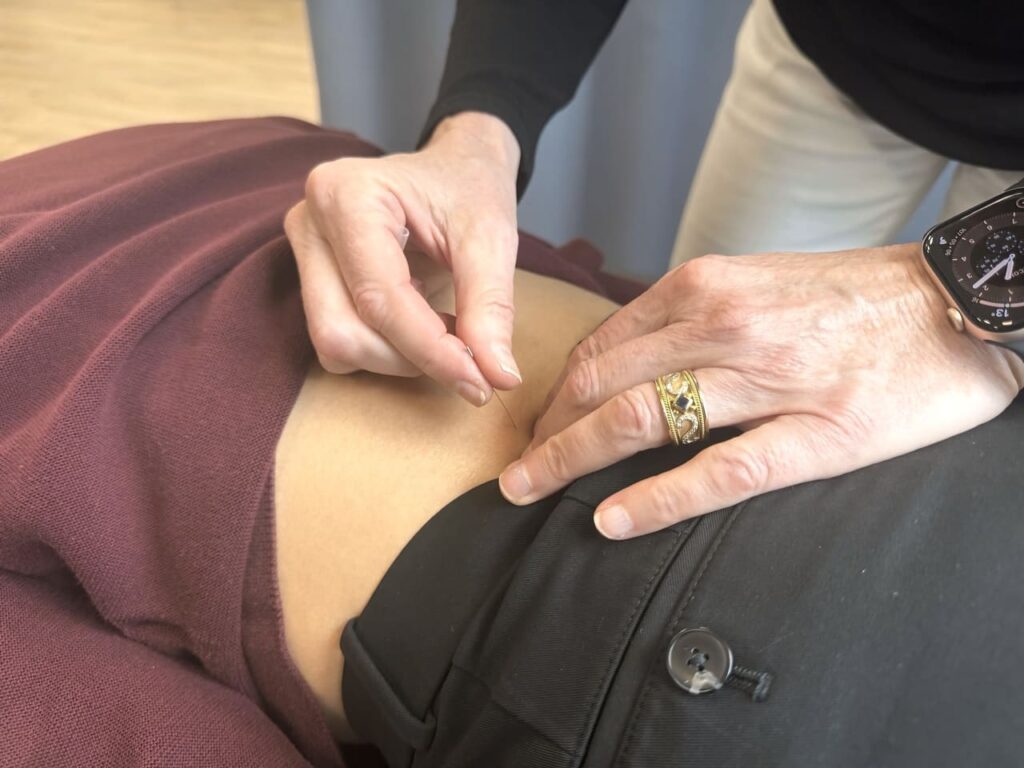
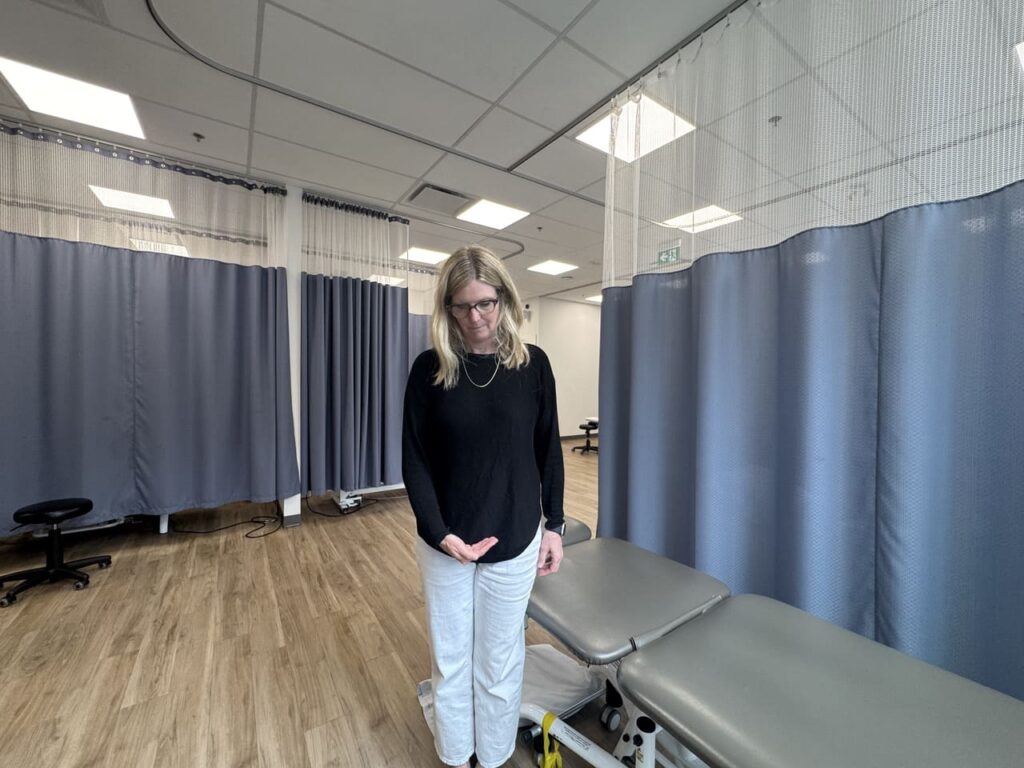
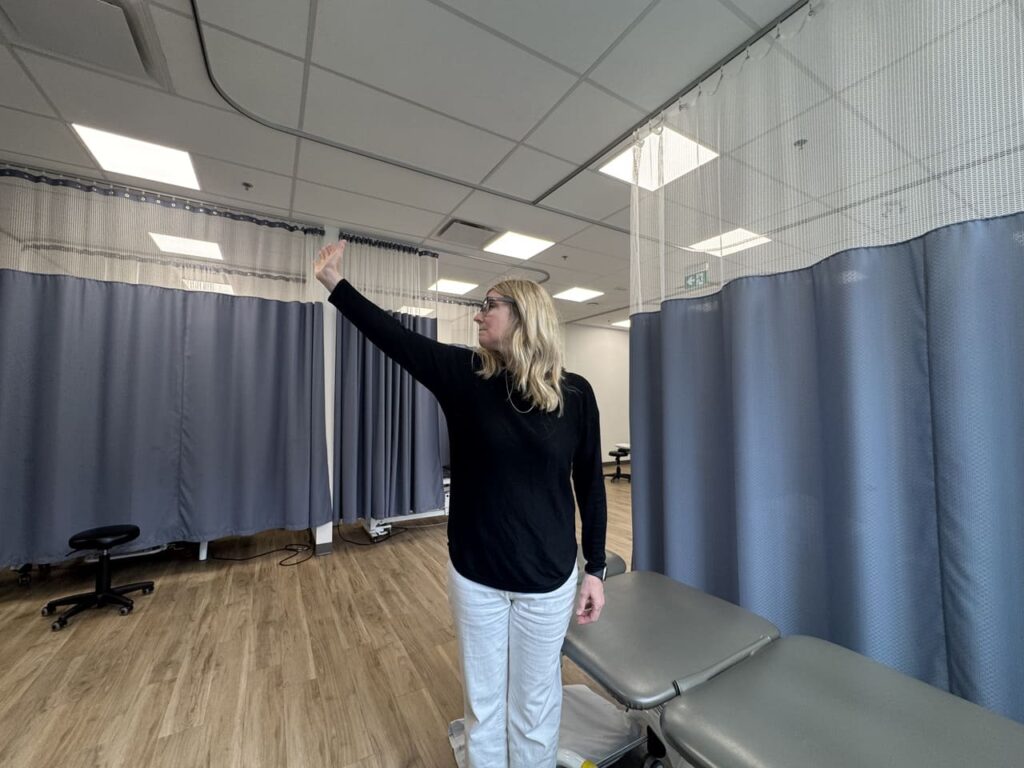
If you’re not sure whether your pain is coming from a muscle, a nerve, or both, don’t wait. The earlier we assess and treat the issue, the better your results.
Avenue Physio has helped thousands of Calgarians move and feel better since 1984. Book a one-on-one appointment with our expert team in downtown Calgary to get answers—and relief.
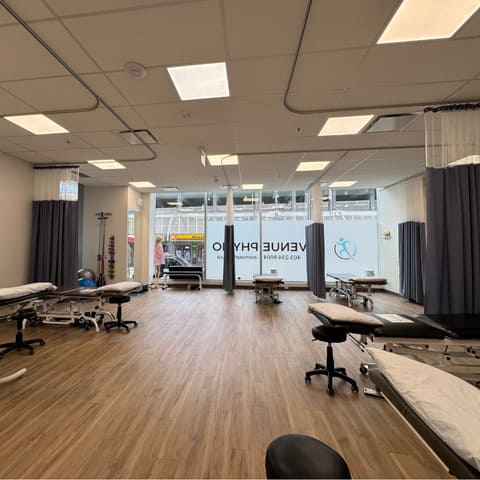
How do I know if my pain is coming from a nerve? If you feel burning, tingling, numbness, or pain that travels down an arm or leg, a nerve may be involved. A physiotherapist can confirm this through assessment.
Can muscle pain feel like nerve pain? Yes—trigger points in muscles can refer pain down the arm or leg and mimic nerve pain. That’s why expert assessment is key.
Do I need imaging before seeing a physiotherapist? Not usually. Physiotherapists can assess and treat most muscle and nerve conditions without needing imaging first.